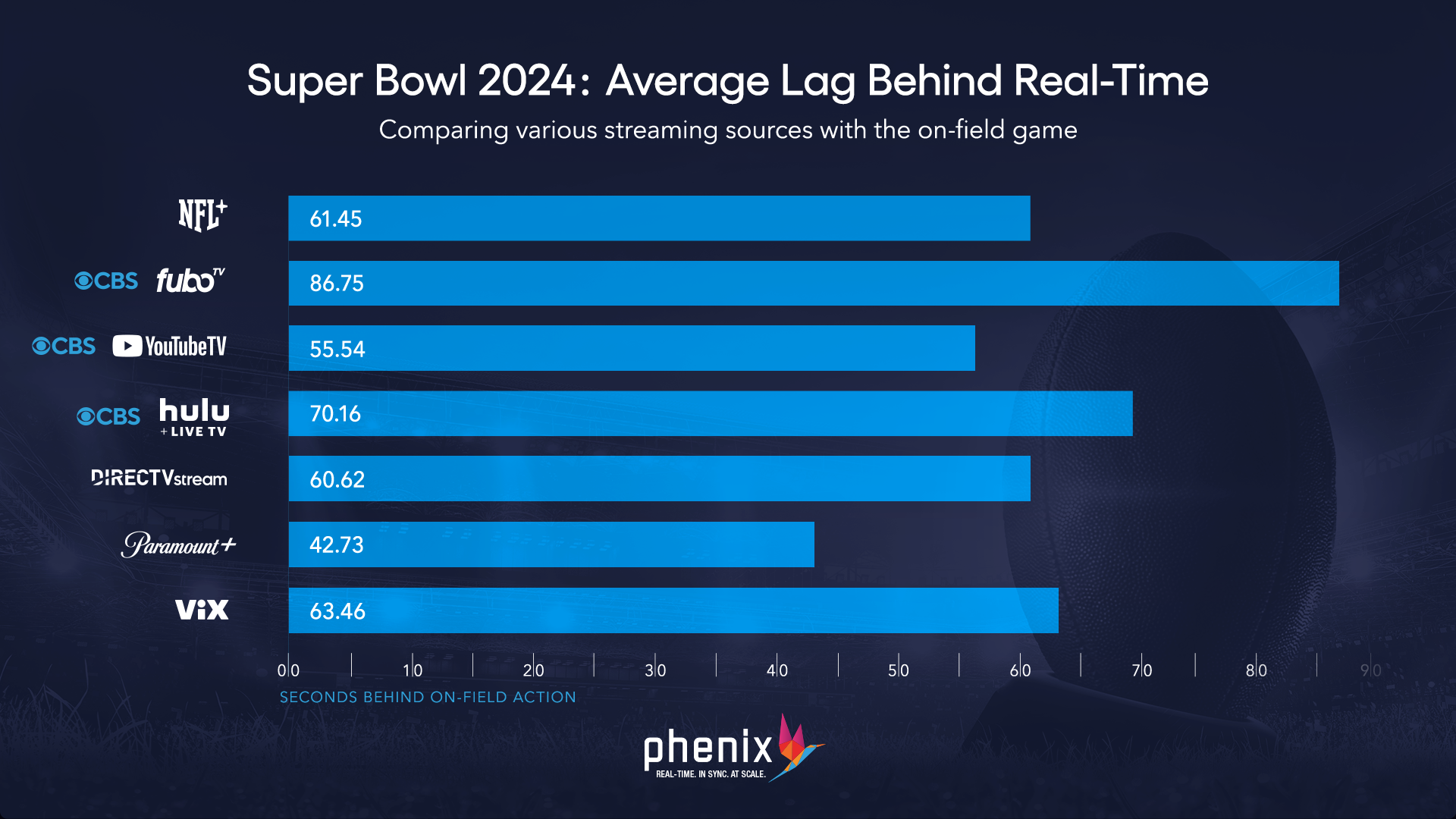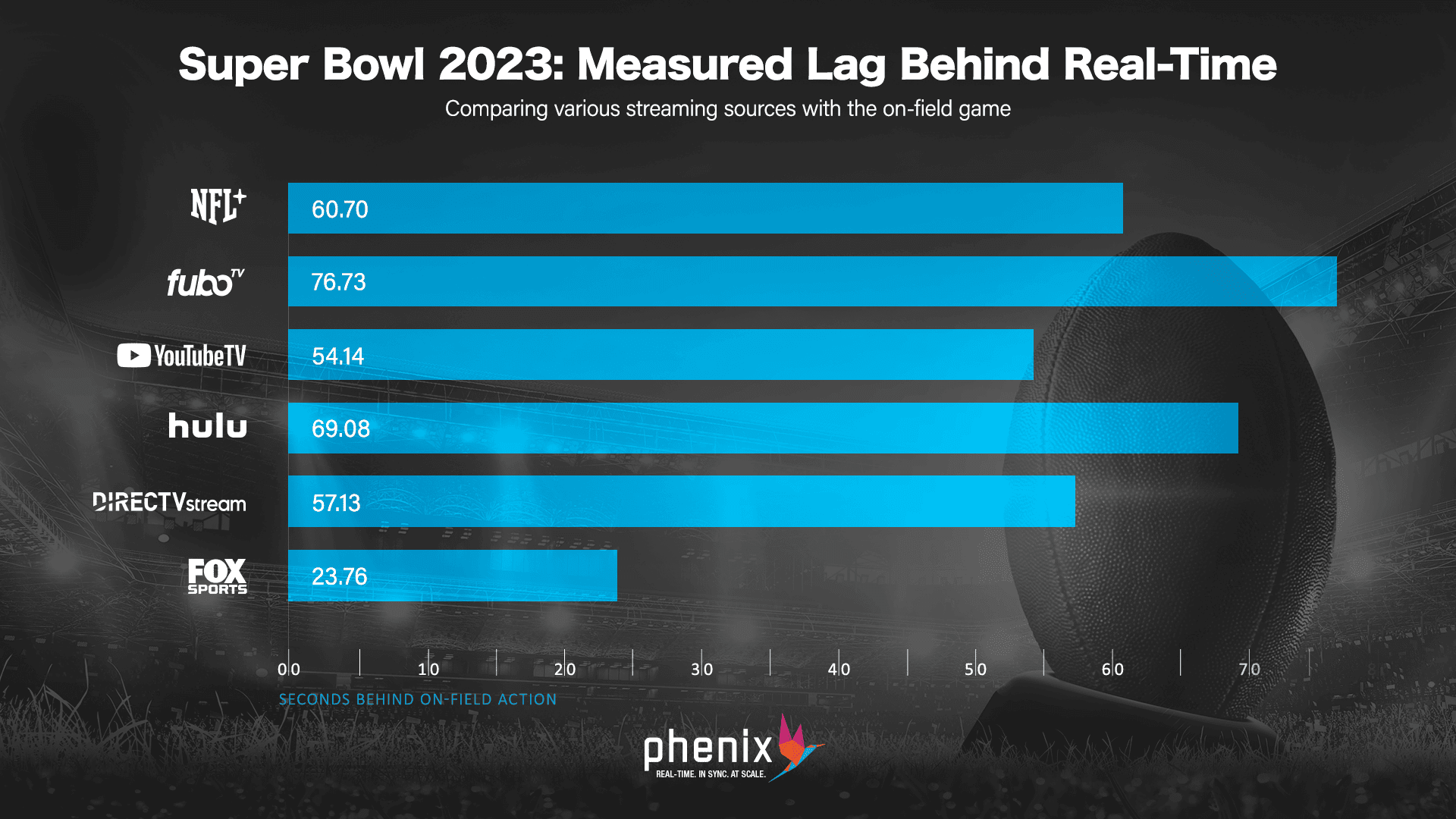Super Bowl Latency: ‘Unfortunately, Nothing Has Changed,’ says Phenix in Annual Study
Report looks at delay behind action on the field by home delivery services from OTA to fiber to streaming
Story Highlights
Delay in latency of Sunday’s Super Bowl broadcast increased for the first time in five years, according to a study by the video delivery technology vendor Phenix.
 In its annual study of the delay viewers experienced based on the platforms in which they consumed Super Bowl LVIII, Paramount+ led the way for streaming options with an average of 42.73 seconds of delay. However, it’s a notable increase in latency when compared to last year’s Super Bowl broadcaster, FOX Sports, which saw only 23.76 seconds of delay on its live stream to the FOX Sports app.
In its annual study of the delay viewers experienced based on the platforms in which they consumed Super Bowl LVIII, Paramount+ led the way for streaming options with an average of 42.73 seconds of delay. However, it’s a notable increase in latency when compared to last year’s Super Bowl broadcaster, FOX Sports, which saw only 23.76 seconds of delay on its live stream to the FOX Sports app.
Virtual MVPDs such as YouTube TV, Hulu + Live TV, and fuboTV all saw slight to moderate increases in latency. YouTube TV saw its delay increase slightly to 55.54 seconds in 2024 from 54.14 seconds in 2023. Hulu + Live TV also ticked up just slight to 70.16 seconds in 2024 from 69.08 in 2023. fuboTV saw a significant jump in latency with last night’s broadcast coming in at 86.75 seconds versus 76.73 in 2023.
“This is the fifth year we’ve conducted our Super Bowl latency study, and unfortunately nothing has changed – the industry has yet to catch up with consumer demand to provide a real-time experience,” says Roy Reichbach, CEO of Phenix. “For today’s consumers, live sporting events are riddled with spoilers, especially as we continue to see this new ‘scroll and watch’ habit, getting notifications straight to our phones via apps and social media. For one of the most highly anticipated sporting and cultural moments, and in a world where artificial intelligence is taking reign, there should be no excuse as to why broadcasters aren’t able to stream the game as it is happening on the field in real-time. A solution exists, and the people want it.”
 Phenix measured the delays from the field-of-play to NFL+ mobile, CBS on YouTubeTV, CBS on Hulu+ Live TV, DirecTV Stream, CBS on fuboTV, Paramount+ and ViX / ViX+.
Phenix measured the delays from the field-of-play to NFL+ mobile, CBS on YouTubeTV, CBS on Hulu+ Live TV, DirecTV Stream, CBS on fuboTV, Paramount+ and ViX / ViX+.
The data also revealed that broadcast delays increased over previous years. The average delay behind real-time action on the field of play for cable viewers was 50.40 seconds. For some, that number ticked up to as high as 79.92 seconds. The average delay on television delivered to the home via fiber (i.e. Verizon Fios) was behind field of play at a rate of only 29.00 seconds. Over-the-air (OTA) broadcast delays clocked in at only about 22.19 seconds behind the field of play.
“Rabbit ear antennas, which were introduced in the 1950s, are making a comeback in 2024, and it’s because people are resorting to old school solutions to get real-time updates,” says Jed Corenthal, CMO of Phenix. “In 2023, consumers on average spent $48 a month on streaming services, so spending even more when the technology exists to better the streaming viewing experience, is simply put, unacceptable. Fans are becoming increasingly frustrated and we are reaching a tipping point – changes need to be made to bring the ‘live’ to televised sporting events into 2024. ” –
